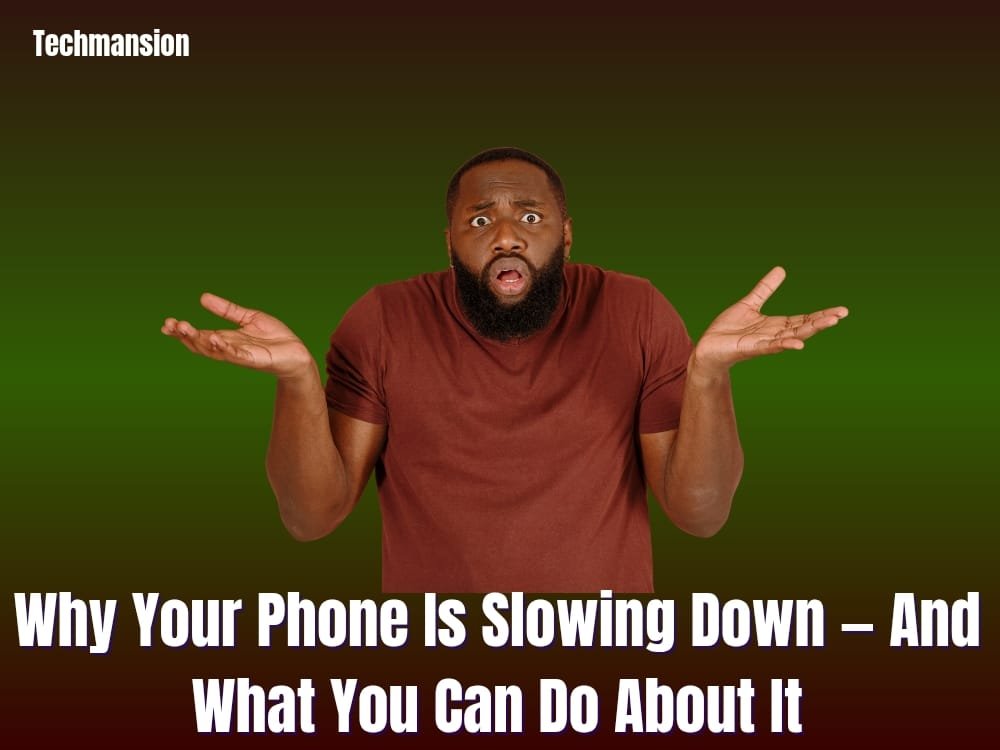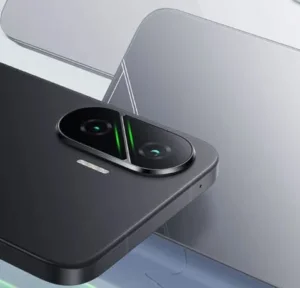You picked up your phone to reply to a message, open your favorite app, or maybe take a quick photo. But it lags. The app crashes. Or worse, the screen freezes. Suddenly, it feels like your once-sleek device is now a frustrating relic. Sound familiar? You’re not alone.
If your phone is slowing down, you’re likely wondering why — and more importantly, what you can do to fix it. Let’s walk through the real reasons behind the slowdown and the solutions that can give your device a second wind.
Understanding the Problem: Why Your Phone Slows Down Over Time

Regardless of the brand, be it iPhone, Samsung, Infinix or Tecno, all phones develop a tendency of becoming sluggish at one time or the other. This is usually a product of both software old age and hardware constraints, as well as user behavior. This is what may be taking place under the hood:
1. Outdated Software
Software updates are meant not only to add new features to them but also to remove bugs, enhance their performance, and optimize memory usage. But in case your gadget is too outdated, it may cease getting these super-important updates or, even worse, they may be too big in size to get installed on its hardware
2. Background Processes and App Bloat
We download tens of apps as time goes by. Others are background processes that are always on and suck battery, use RAM and slacken the performance. Social media applications, games, and trackers may keep your CPU busy even when not used.
3. Lack of Storage Space
The shortage of internal storage is one of the greatest culprits of a slow phone. Your phone is not able to perform optimally when it is almost full. Android and iOS require empty space in case of temporary files in the system, caching, and app upgrades.
4. Aging Hardware
The processor, RAM and internal memory in your phone get weak. This is not always apparent but it counts. Specifically, NAND flash memory might become worn after being used over a long period of time, which means a slower read/write speed.
5. Excessive Cache Files
All apps use the cache memory to store temporary data so that faster access is possible. Although at first this may increase the speed, too many cached files may create a slowdown as time goes on, particularly when the files are corrupted.
6. Malware or Poorly-Optimized Apps
Especially for Android users, installing apps from unofficial sources or using certain free apps might expose your phone to malware. These malicious apps can use your phone’s resources without you realizing.
How to know the Signs: Is your phone slowing down?

How can you confidently assume your device is getting slower? Some general indicators are these:
- Applications are slow to launch or crash often
- Touchscreen is slow in responding
- Typing is sluggish
- Camera is slow in opening or saving photos
- You phone overheats when you use light applications on it
- Severe crashes or freezing of the system regularly
- Battery will run out quicker than normal
When you detect any of these problems, then it is a good indicator that your phone is slowing.
Read Also: How to Optimize Your Smartphone Battery Life: Tips and Tricks
What You Can Do About It

Do not yet run to the store to get a new phone. The following are some ways in which you can revive your existing device.
1. Free Storage Space
Begin by removing apps that you do not use, photos that are in duplicates, large videos and other files that are not in use. You may also transfer files to the cloud such as Google Drive or OneDrive. Don t go below 10-15 percent free storage space to perform well.
Android tip: In Settings>Storage, you can see the breakdown of the data. In iOS, attempt Settings > General > iPhone Storage.
2. Clear Cache and Data
Such applications as Chrome, Facebook, and Instagram may use gigabytes of cached information. Enter your app settings and clear cache every now and then.
On Android:
Settings > Apps > app > Storage > Clear cache
On iOS:
In the majority of apps, cache will have to be cleared by deleting and reinstalling.
3. Power off Your Phone More Frequently
An easy reboot erases temporary files, updates background tasks and can boost performance to a great extent. This should be done weekly.
4. Keep Apps and System Software up-to-date
Even when you do not get major updates of the OS, make sure that applications are up-to-date. They are always developed to perform better by their developers.
5. Turn off Unused Background Services
In Android, restrict background usage of particular apps in Battery Usage Settings. iOS: Settings > General > Background App Refresh and disable all the apps which you do not require to run in the background.
6. Disable Animations
You can also make your phone feel faster by turning off system animations on your device, should it be possible.
On Android: Go to Developer Options > In Animation scale, reduce or disable animation.
iOS: Settings -> Accessibility -> Motion -> Reduce Motion.
7. The Final Option Factory Reset
As the last resort, you can always restore your data and perform the complete reset that will bring your phone back to the initial level of performance. All you need to do is to make sure that you saved all the important data to the cloud or external storage in advance.
When Is It Time to Consider an Upgrade?
Sometimes, no matter what you do, the lag persists. If your phone is more than 4-5 years old, is no longer receiving security updates, or struggles to run basic apps, it may be time to consider an upgrade.
However, make sure you’ve tried every solution above first — especially if you’re not ready to spend on a new phone yet.
What You Can Do to Make Sure Your Phone Does Not Slow Down Again

These tips will assist you in preventing the same problems in the future once you have managed to overcome the problem:
- Do not install apps you do not require – be lean
- Transferring media files to your PC or a cloud regularly
- Do not charge your phone at night, or in hot conditions
- Install apps only with reliable sources (Play Store or App Store)
- Remove the cache once a month and restart your phone once a week
These habits go a long way in ensuring your phone is slowing down and becomes a rare frustration — not a daily battle.
Final Thoughts
If your phone is slowing down, it does not always imply that it is time to replace it. In many cases, it indicates that your gadget should be cared about and loved a bit. With the help of the identification of the causes and implementation of practical measures to correct them, and the use of preventative practices, you can make your phone live longer and perform better, save money and a lot of unnecessary disappointment.
Be it in Nigeria, where data consumption is high, phone storage is low, or you are simply looking to get the best out of your device without necessarily purchasing a new one, these steps present a practical, human solution to a common digital dilemma.
Get control over your device back. It is only a few taps to a faster and smoother experience.




